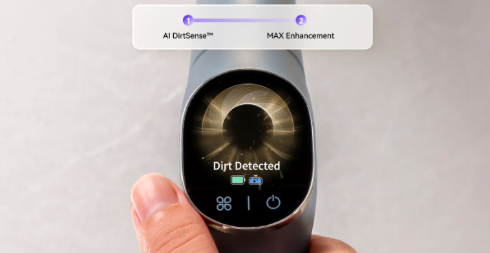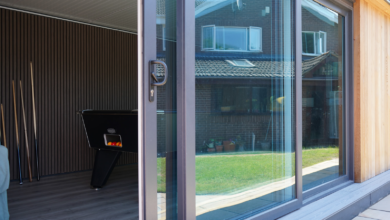Modern Vacuum Cleaners: Features, Testing, and Selection Criteria

Understanding Vacuum Cleaner Types
Upright Models
Upright vacuum cleaners remain popular for carpeted homes. These devices combine suction with rotating brushrolls to lift embedded dirt. Many models convert to handheld units for above-floor cleaning. Weight varies between 13 to 23 pounds, impacting maneuverability.
HEPA filtration is common in upright designs, trapping allergens effectively. Some include odor-neutralizing technology for pet households. Users report strong suction but note challenges with heavy models on stairs.
Canister Designs
Canister vacuums excel on mixed flooring types. They separate the motor unit from the cleaning head, improving reach under furniture. Models like those with parquet brushes optimize hardwood floor care. HEPA filters and sealed systems enhance air quality.
Maneuverability varies based on wheel design and hose length. While effective, canisters may require frequent emptying due to smaller dust capacities. Retractable cords and onboard tool storage improve convenience.
Stick and Handheld Options
Cordless stick vacuums prioritize portability for quick cleanups. Battery life ranges from 20 to 100 minutes, influencing runtime. Many feature motorized brushrolls for carpet cleaning. Lightweight designs under 7 pounds reduce user fatigue.
Handheld models target spot cleaning with compact dust cups. Wet/dry capabilities expand their utility for liquid spills. Rinsable filters and removable batteries extend product lifespan. Noise levels remain a consideration for apartment dwellers.
Performance Testing Protocols
Laboratory Evaluation Methods
ASTM International standards guide vacuum testing. Automated machines measure debris removal from medium-pile carpets. Controlled passes ensure consistency across models. Separate equipment cleans test surfaces between trials.
Edge-cleaning efficiency is assessed through standardized debris placement. Suction power through attachments determines above-floor performance. Pet hair tests use synthetic fibers to simulate real-world conditions.
Consumer Experience Metrics
Maneuverability tests involve navigating around furniture and corners. Emptying mechanisms are graded for mess prevention. Controls and weight distribution impact usability scores. Noise levels undergo Quiet Mark certification.
Long-term durability tests evaluate belt integrity and filter lifespan. Consumer testers rate storage convenience and cord management. App integration quality is assessed for smart models.
See also: How Field Service Management Software Boosts Customer Satisfaction and Retention
Key Selection Factors
Flooring Compatibility
Carpet height influences brushroll selection. Adjustable suction settings prevent scatter on hard floors. Motorized nozzles require deactivation for delicate surfaces. Auto-height adjustment adapts to varying pile depths.
Mixed-floor homes benefit from dual brush systems. Canister models with interchangeable heads offer versatility. Robot vacuums struggle with high-pile rugs but maintain hard surfaces effectively.
Maintenance Requirements
Bagless models demand frequent filter cleaning. Washable components reduce long-term costs. HEPA filters require replacement every 6-12 months. Self-emptying bases minimize dust exposure in robot models.
Battery care impacts cordless vacuum longevity. Storage conditions affect lithium-ion performance. Brushroll maintenance prevents hair tangles in pet-friendly households.
Technological Advancements
Smart Features
Laser mapping improves robot vacuum navigation. App-controlled scheduling allows zone-specific cleaning. Voice command integration works with major smart home systems. Real-time particle sensors adjust suction automatically.
Some advanced models feature vacuum cleaner systems with mopping integration. These units separate wet and dry debris while self-cleaning brushes. Runtime remains limited compared to traditional models.
Filtration Innovations
Sealed allergen systems prevent particle escape during emptying. Cyclonic separation reduces filter clogging in bagless units. UV-C light attachments target microbial growth in dustbins.
Water filtration models trap particles in liquid, ideal for allergy sufferers. Multi-stage filtration combines pre-motors, foam filters, and exhaust HEPA layers.
Usage Considerations
Space Requirements
Large homes need cordless models with extra batteries. Apartments benefit from compact storage profiles. Central vacuum systems require permanent installation but eliminate portability issues.
Multi-level dwellings may require separate units per floor. Stair cleaning favors lightweight canisters or stick vacuums. Garage spaces often utilize shop vacs for heavy debris.
Health and Safety
Asthma sufferers should prioritize sealed HEPA systems. Bagged models reduce allergen exposure during disposal. Anti-tip designs prevent accidents during use.
Wet/dry vacuums require thorough drying to prevent mold. Electrical safety certifications ensure protection against surges. Brushroll shutoff switches prevent floor damage.
Maintenance Best Practices
Filter Care
Washable filters need monthly cleaning with cold water. Complete drying prevents mildew growth. Carbon filters neutralize odors but require annual replacement.
Pre-motor filters protect internal components from large debris. Post-motor filters fine-tune exhaust air quality. Filter replacement indicators extend motor life.
Brushroll Management
Regular hair removal prevents belt wear. Bristle stiffness impacts carpet grooming effectiveness. Interchangeable brush heads adapt to different surfaces.
Lubrication points on older models reduce friction noise. Belt tension checks maintain optimal brush rotation speed. Immediate debris clearance prevents roller jams.
Cost Considerations
Initial investment ranges from $50 for basic models to $1,500 for robotic systems. Bagged units incur ongoing supply costs. Extended warranties cover motor repairs but exclude consumables.
Energy-efficient designs reduce long-term electricity use. Commercial-grade models justify higher costs through extended durability. Refurbished units offer budget alternatives with shorter warranties.
Environmental Impact
Recyclable components are becoming standard. Lithium-ion batteries require proper disposal protocols. EU energy regulations cap motor wattage at 900W for reduced consumption.
Reusable microfiber pads minimize waste in mopping models. Solar-compatible charging stations emerge for cordless units. Manufacturers increasingly use post-consumer plastics in construction.
Future Trends
AI-driven dirt detection optimizes cleaning paths. Modular designs allow component upgrades. Solid-state batteries promise longer runtime and faster charging.
Integration with home air quality monitors enables automatic activation. Microbial sensors could soon detect pathogen concentrations. Self-repairing brush materials are under development.




